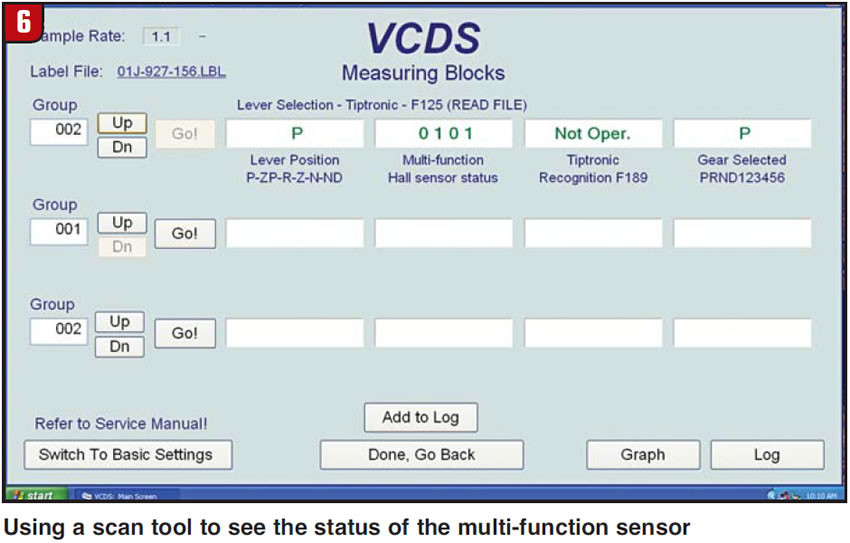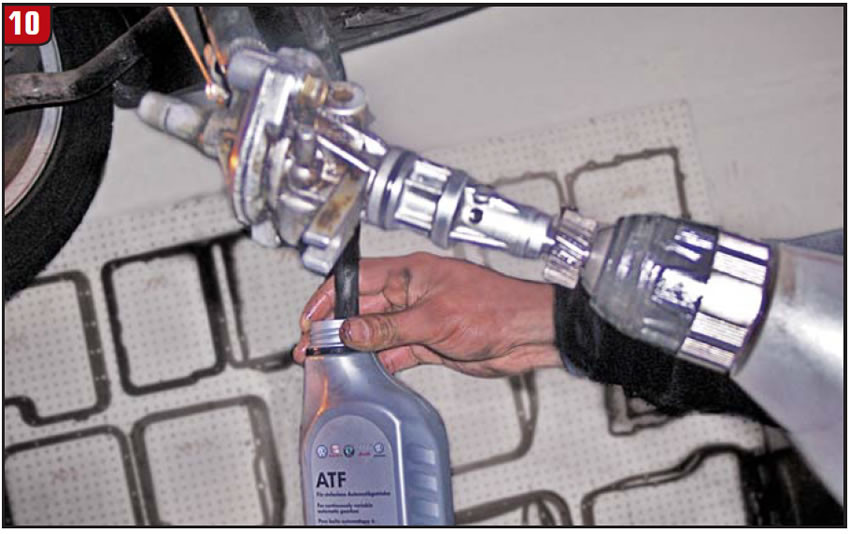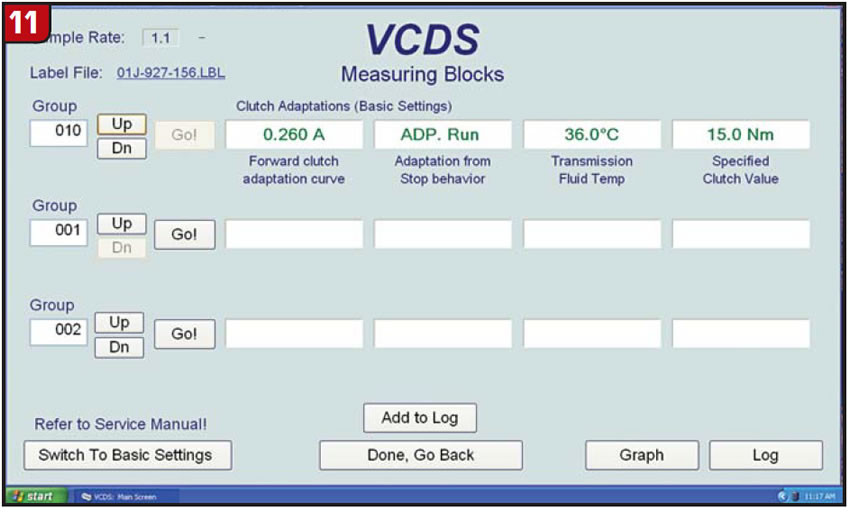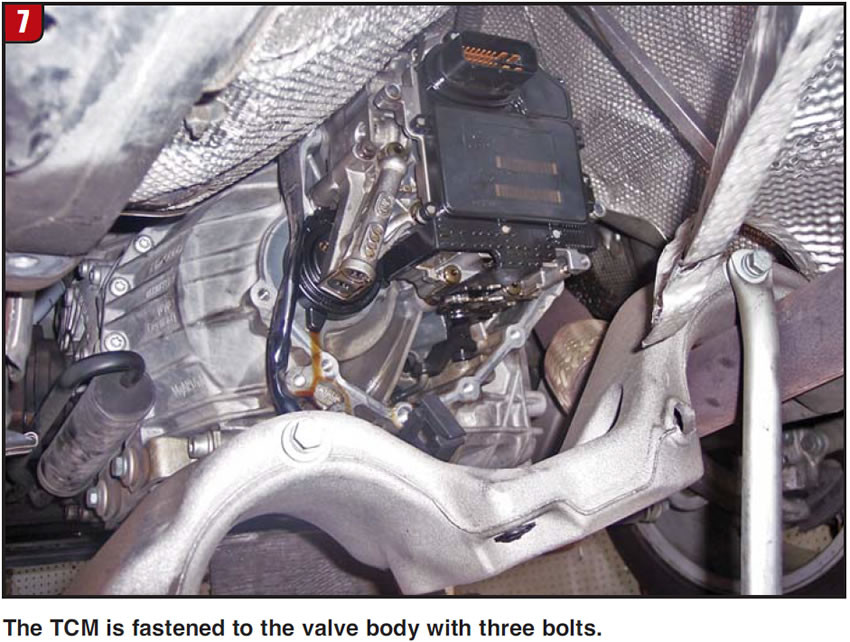

Is Audi Fault Code 17090 a Transmission Range Sensor Issue?
Table of Content
- 1. What Does Audi Fault Code 17090 Mean?
- 1.1 What are the Symptoms Associated With Code 17090?
- 1.2 What are the Common Causes of the 17090 Fault Code?
- 2. How to Diagnose the 17090 Audi Fault Code?
- 2.1 What Tools Are Needed for Diagnosing the 17090 Code?
- 2.2 How Can Live Data Help in Diagnosing Code 17090?
- 3. How to Fix the 17090 Audi Fault Code?
- 3.1 What are the Steps to Replace the Transmission Range Sensor?
- 3.2 Is Reprogramming Required After Replacing the TCM?
- 3.3 How Can AutoExplain.com Help With TCM Reprogramming?
- 4. Preventing Future Issues With the Transmission Range Sensor
- 4.1 What Maintenance is Recommended for the 01J CVT Transmission?
- 4.2 How to Properly Check the CVT Fluid Level?
- 5. Why Choose AutoExplain.com for Your Diagnostic Needs?
- 5.1 What Remote Services Does AutoExplain.com Offer?
- 5.2 How Can AutoExplain.com Help Save Time and Money?
- 5.3 What Makes AutoExplain.com’s Experts Qualified?
- 6. Common Questions About Audi Fault Code 17090 (FAQ)
- 7. Conclusion: Trust AutoExplain.com for Your Audi Repair Needs
The 17090 Audi Fault Code indicates a problem with the Transmission Range Sensor (TRS), also known as the Multi-Function Switch (MFS) or F125. Addressing this promptly is essential to ensure smooth operation of your Audi’s continuously variable transmission (CVT). This article explains the intricacies of fault code 17090, its causes, diagnostic steps, and effective solutions, including expert assistance from AutoExplain.com.
1. What Does Audi Fault Code 17090 Mean?
Audi fault code 17090 indicates a malfunction within the transmission range sensor (F125), which is responsible for informing the transmission control module (TCM) about the selected gear. This sensor uses Hall-effect sensors to detect the position of the selector shaft and sends signals to the TCM. When the TCM detects an implausible signal or a complete lack of signal from the transmission range sensor, it triggers the 17090 fault code. In this state, a fault code is stored, and the transmission control module (TCM) will substitute a program to enable continued operation of the vehicle with some restrictions. Since this state is not critical, it’s not indicated to the driver, although the driver may notice the fault by the different way the vehicle is operating. The underlying causes could range from sensor failure to wiring issues and TCM malfunctions, and seeking professional diagnostics from AutoExplain.com becomes crucial for accurate identification and resolution.
1.1 What are the Symptoms Associated With Code 17090?
When the Audi’s TCM detects the 17090 fault code, it can manifest through several noticeable symptoms:
- Inverted Gear Selector Display: The gear selector position indicator may invert or flash, signaling a critical issue.
- Limited Gear Availability: Restrictions in gear selection, affecting driving flexibility.
- Transmission Slippage: Experiencing slippage during gear shifts, impacting overall performance.
- No Reverse Gear: Complete unavailability of the reverse gear function.
- Sluggish Performance: A noticeable decrease in the vehicle’s responsiveness and acceleration.
- Vehicle Not Starting: In some cases, a faulty Hall-effect sensor D can prevent the vehicle from starting.
- Illuminated Gear Indicator Lights: All gear indicator lights lighting up and flashing simultaneously.
1.2 What are the Common Causes of the 17090 Fault Code?
Understanding the causes of fault code 17090 helps to streamline the diagnostic and repair process:
- Faulty Transmission Range Sensor (F125): The sensor itself may have failed due to wear, damage, or internal component malfunction.
- Wiring Issues: Damaged, corroded, or loose wiring connecting the sensor to the TCM can disrupt the signal.
- Contamination: Metal particles accumulating on the selector shaft magnetic gate can interfere with the Hall-effect sensors.
- Transmission Control Module (TCM) Malfunction: In some cases, the TCM itself may be faulty, leading to incorrect interpretation of sensor signals.
- Software Issues: Outdated or corrupted software in the TCM can cause miscommunication and trigger the fault code.
 Transmission Range Sensor
Transmission Range Sensor
2. How to Diagnose the 17090 Audi Fault Code?
Diagnosing the 17090 fault code requires a systematic approach to pinpoint the root cause. Here’s a step-by-step guide to assist technicians:
- Initial Scan: Use a diagnostic scan tool to confirm the presence of the 17090 fault code and check for any other related codes that might provide additional insights.
- Visual Inspection: Conduct a thorough visual inspection of the transmission range sensor, its wiring, and connectors for any signs of damage, corrosion, or loose connections.
- Data Parameter Analysis: Use the scan tool to access live data from the transmission range sensor and monitor its readings as the gear selector is moved through each position. Look for any inconsistencies or illogical values.
- Wiring Continuity Test: Use a multimeter to perform continuity tests on the wiring between the sensor and the TCM. Check for any open circuits or shorts to ground.
- Sensor Function Test: If possible, perform a function test on the transmission range sensor using the scan tool or other specialized equipment. This can help determine if the sensor is responding correctly to changes in gear selection.
- TCM Inspection: If the sensor and wiring appear to be in good condition, inspect the TCM for any signs of damage, such as corrosion or burnt components.
- Software Check: Verify that the TCM has the latest software version installed. If not, update the software as necessary.
2.1 What Tools Are Needed for Diagnosing the 17090 Code?
Having the right tools is crucial for accurate and efficient diagnosis. Essential tools include:
- Diagnostic Scan Tool: To read and clear fault codes, and access live data.
- Multimeter: For testing wiring continuity and voltage.
- Wiring Diagrams: To understand the electrical connections and identify potential faults.
- Basic Hand Tools: Such as screwdrivers, sockets, and pliers.
2.2 How Can Live Data Help in Diagnosing Code 17090?
Analyzing live data parameters can provide valuable insights into the operation of the transmission range sensor. By monitoring the sensor’s output signals as the gear selector is moved, technicians can identify:
- Inconsistent Readings: Values that do not correspond to the selected gear position.
- Missing Signals: Complete absence of a signal from one or more of the sensor’s Hall-effect sensors.
- Erratic Behavior: Fluctuations or jumps in the sensor’s output that are not consistent with smooth gear selection.
- Fault State Confirmation: Verifying if the logic state of the transmission range sensor is in a fault state.
 Data Parameters
Data Parameters
3. How to Fix the 17090 Audi Fault Code?
Once the diagnosis is complete, the appropriate repair steps can be taken to resolve the issue.
- Replace the Transmission Range Sensor (F125): If the sensor is found to be faulty, replace it with a new, OEM-quality sensor.
- Repair Wiring Issues: Repair or replace any damaged or corroded wiring and connectors. Ensure that all connections are clean and secure.
- Clean Selector Shaft Magnetic Gate: Remove any metal particles or debris from the selector shaft magnetic gate to ensure proper sensor operation.
- Replace or Reprogram the TCM: If the TCM is found to be faulty, replace it with a new or rebuilt unit. Reprogramming may be necessary to ensure compatibility with the vehicle.
- Software Update: Update the TCM software to the latest version to address any known software issues.
3.1 What are the Steps to Replace the Transmission Range Sensor?
Replacing the transmission range sensor involves several steps that need to be followed carefully:
- Remove the TCM: Access the TCM by removing it from the valve body.
- Disconnect Wiring: Carefully disconnect the wiring harness from the transmission range sensor.
- Remove the Old Sensor: Unbolt and remove the faulty sensor from its mounting location.
- Install the New Sensor: Install the new sensor, ensuring that it is properly aligned and secured.
- Reconnect Wiring: Reconnect the wiring harness to the new sensor.
- Reinstall the TCM: Reinstall the TCM onto the valve body.
3.2 Is Reprogramming Required After Replacing the TCM?
Yes, when replacing the TCM, it is typically necessary to reprogram it to ensure compatibility with the vehicle’s other systems. Reprogramming involves:
- Coding: Entering specific information about the vehicle’s configuration, such as engine type, transmission type, and optional equipment.
- Adaptations: Performing adaptation procedures to teach the TCM how to work with the transmission’s components, such as the valve body and solenoids.
3.3 How Can AutoExplain.com Help With TCM Reprogramming?
AutoExplain.com offers remote TCM reprogramming services to assist technicians with this process. Our experienced technicians can remotely access your vehicle’s computer system and perform the necessary programming and adaptations. This eliminates the need to send the vehicle to a dealership, saving time and money. To fill with CVT special fluid #G-052-180-A2.
 Filling with CVT fluid
Filling with CVT fluid
4. Preventing Future Issues With the Transmission Range Sensor
Taking preventative measures can help avoid future problems with the transmission range sensor:
- Regular Maintenance: Follow the manufacturer’s recommended maintenance schedule for the transmission, including fluid changes.
- Inspect Wiring: Periodically inspect the sensor’s wiring and connectors for any signs of damage or corrosion.
- Keep Clean: Ensure the selector shaft magnetic gate remains free of metal particles and debris.
- Software Updates: Keep the TCM software up to date with the latest version.
4.1 What Maintenance is Recommended for the 01J CVT Transmission?
Regular maintenance of the 01J CVT transmission is critical for its longevity and reliable operation. Recommended maintenance includes:
- Fluid Changes: Change the CVT fluid every 30,000 to 40,000 miles, or as recommended by the manufacturer.
- Filter Replacement: Replace the transmission filter at the same time as the fluid change.
- Inspection: Inspect the transmission for any signs of leaks, damage, or unusual noises.
4.2 How to Properly Check the CVT Fluid Level?
Checking the CVT fluid level requires specific steps to ensure accuracy:
- Warm-Up: Drive the vehicle until the CVT fluid temperature reaches 35°-45° Celsius.
- Level Surface: Park the vehicle on a level surface.
- Check Procedure: Follow the manufacturer’s instructions for checking the fluid level, typically involving removing a check plug and observing the fluid flow.
 Checking fluid level
Checking fluid level
5. Why Choose AutoExplain.com for Your Diagnostic Needs?
AutoExplain.com stands out as a premier provider of remote diagnostic and repair solutions for automotive technicians, offering:
- Expertise: Access to experienced technicians with in-depth knowledge of Audi vehicles and their complex systems.
- Remote Support: Convenient remote diagnostic and programming services, eliminating the need for costly on-site visits.
- Cost Savings: Competitive pricing and efficient solutions that save time and money.
- Comprehensive Services: A wide range of services, including fault code diagnosis, TCM reprogramming, and software updates.
5.1 What Remote Services Does AutoExplain.com Offer?
AutoExplain.com provides a comprehensive suite of remote services to address various automotive issues:
- Fault Code Diagnosis: Remote analysis of fault codes to pinpoint the root cause of the problem.
- TCM Reprogramming: Remote programming and adaptation of the TCM to ensure proper operation.
- ECU Programming: Remote programming of the engine control unit (ECU) for optimal performance and efficiency.
- BCM Programming: Remote programming of the body control module (BCM) to customize vehicle features and functions.
- Key Programming: Remote programming of keys and immobilizer systems for vehicle security.
- Navigation Updates: Remote updating of navigation systems to ensure accurate and up-to-date maps.
5.2 How Can AutoExplain.com Help Save Time and Money?
AutoExplain.com’s remote services offer significant time and cost savings compared to traditional repair methods:
- Reduced Downtime: Remote diagnostics and programming minimize vehicle downtime, allowing technicians to quickly resolve issues and get vehicles back on the road.
- Eliminated Towing Costs: Remote services eliminate the need to tow vehicles to dealerships or specialized repair shops.
- Lower Labor Costs: Remote services reduce labor costs by allowing technicians to focus on other tasks while AutoExplain.com experts handle the complex programming and diagnostics.
5.3 What Makes AutoExplain.com’s Experts Qualified?
AutoExplain.com’s team of experts possesses the qualifications and experience necessary to provide top-notch remote services:
- Extensive Training: Our technicians undergo rigorous training on Audi vehicles and their complex systems.
- Years of Experience: Our team has years of experience in diagnosing and repairing automotive issues.
- Certifications: Our technicians hold industry-recognized certifications, demonstrating their expertise and competence.
- Up-to-Date Knowledge: We stay current with the latest technologies and repair techniques through ongoing training and education.
 TCM location
TCM location
6. Common Questions About Audi Fault Code 17090 (FAQ)
Q1: What does the Audi fault code 17090 specifically refer to?
A: The Audi fault code 17090 indicates a problem with the Transmission Range Sensor (TRS), also known as the Multi-Function Switch (MFS), responsible for communicating the selected gear position to the Transmission Control Module (TCM).
Q2: Can I drive my Audi with the 17090 fault code?
A: Driving with the 17090 fault code is not recommended, as it can lead to unpredictable transmission behavior, including limited gear availability, transmission slippage, and potential damage to the transmission.
Q3: Is it possible to fix the 17090 fault code myself?
A: While some basic troubleshooting steps, such as inspecting wiring and connections, can be performed by DIYers, diagnosing and repairing the 17090 fault code often requires specialized tools and expertise. Consulting with a professional technician is recommended.
Q4: How often should I change the CVT fluid in my Audi?
A: The recommended CVT fluid change interval for Audi vehicles is typically every 30,000 to 40,000 miles, or as specified by the manufacturer.
Q5: What are the potential consequences of ignoring the 17090 fault code?
A: Ignoring the 17090 fault code can lead to more severe transmission problems, including complete transmission failure, which can be costly to repair.
Q6: How do metal particles on the selector shaft affect the sensor?
A: Metal particles accumulating on the selector shaft magnetic gate can interfere with the Hall-effect sensors, causing false readings and triggering the 17090 fault code.
Q7: What is the role of Hall-effect sensors in the transmission range sensor?
A: Hall-effect sensors detect the position of the selector shaft and send signals to the TCM, which uses this information to determine the selected gear.
Q8: Can a faulty TCM cause the 17090 fault code?
A: Yes, in some cases, a faulty TCM can cause the 17090 fault code due to incorrect interpretation of sensor signals.
Q9: What is involved in TCM reprogramming?
A: TCM reprogramming involves coding and adaptation procedures to ensure compatibility with the vehicle’s other systems and proper operation of the transmission.
Q10: How can AutoExplain.com help with diagnosing and fixing the 17090 fault code?
A: AutoExplain.com offers remote diagnostic and programming services to assist technicians with diagnosing and repairing the 17090 fault code, including TCM reprogramming, software updates, and expert guidance.
7. Conclusion: Trust AutoExplain.com for Your Audi Repair Needs
Don’t let the 17090 Audi Fault Code disrupt your driving experience. With AutoExplain.com’s expert remote diagnostic and repair services, you can quickly and efficiently resolve transmission issues and get back on the road with confidence. Contact us today via WhatsApp at (+84)967469410 or email at [email protected] to schedule a consultation and experience the AutoExplain.com difference. Our office is located at 1500 N Grant ST Sten Denver, CO 80203. Visit AutoExplain.com for more information. Let AutoExplain.com, with our advanced tools, cutting-edge insights, and dedication to excellence, guide you to success in automotive diagnostics and repair.

65535 Audi Fault Code: Expert Solutions and Fixes
Audi A3 Trouble Code 00796: Diagnosis, Solutions, and Expert Insights
Audi DTC 16347:014 – Expert Diagnosis and Solutions

Josh William
Josh William is a seasoned automotive expert and technical writer at AutoExplain. With a background as an automotive technician, he brings hands-on experience and deep industry knowledge to his writing.



